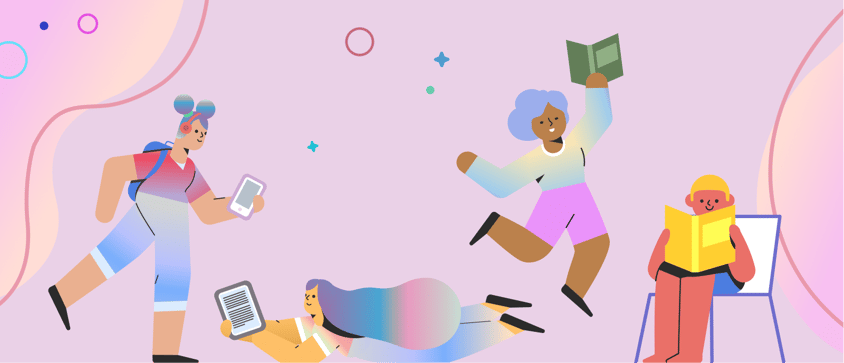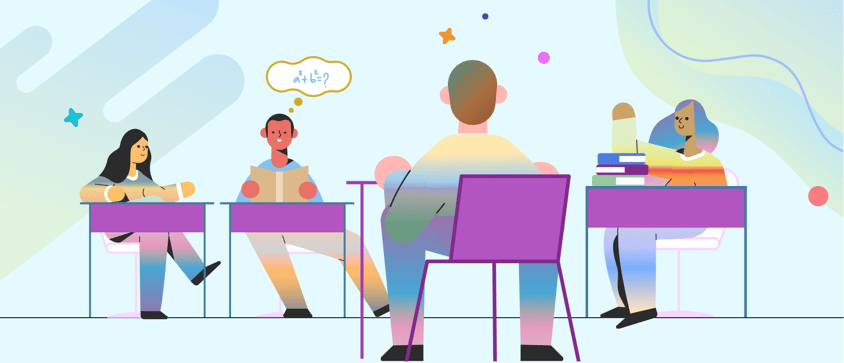Inclusion is a key component of the modern educator’s world. Understanding what an inclusive classroom looks like is essential for both educators and parents as they strive to find the best possible education for their children. Because students may learn in different ways and at different rates, creating an inclusive classroom will help all students succeed. Read on to learn more about inclusive educational programs, why they are important, and how to create an inclusive reading program that sets students up for success throughout their educational career.
What is Inclusive Education?
According to UNICEF, inclusive education means creating learning environments where as many children as possible are in the classroom learning alongside their peers. Inclusive education avoids pulling children with learning disabilities out of the mainstream classroom to be educated separately. This means all children are included in the traditional classroom and given the appropriate learning methods and support staff they need to find success.
Inclusive learning environments often include assistive technology that helps students overcome challenges they may face in a traditional classroom setting. It also means changing the pace, level, or kind of instruction to meet the needs and interests of each individual learner.
Inclusive education covers all aspects of education, including reading education. Reading is foundational to overall educational success, and inclusive education means providing inclusive reading programs.
The inclusive classroom can also extend across all grade levels. While it’s easy to see how it could work in an elementary classroom, high school and middle school students can also benefit from an inclusive education. To nurture students who embrace diversity, teachers and schools need to focus on diversity and inclusion in the classroom.
Why is Inclusive Education Important?
There are several reasons why inclusive education is important, both for traditional learners and for learners with disabilities. We explore a few of these reasons below.
Encourage the Right Skills for All Students
In an inclusive education setting, all students, regardless of their abilities, learn the values, attitudes, and skills they need to enter society and work in a diverse community. The adult world is not filled with people who fit into one particular mold, and students shouldn’t be confined to a cookie-cutter community within their classrooms, either.
In an inclusive classroom, all students learn how to engage with each other, and this prepares them to work and communicate as adults. Children learn how to value the overall community while being pushed to gain similar social and academic skills as their peers. With inclusive education, students will also learn to be supportive in helping others to achieve.
Focus on Education for Every Learner
Inclusive learning environments push teachers to create an educational experience that meets the needs of every learner. This requires increased support, not only for the students with disabilities but for all students in the classroom. It also requires varied methods for delivering instruction, so a wide range of learning styles are reached. The end result is more effective and efficient learning opportunities for every student. As an educator, you may already be utilizing techniques to create an inclusive learning environment. Check out this article for even more ideas to revolutionize your classroom. One of our favorites is offering a wider variety of options in your classroom library. This is a key component of inclusive reading programs.
Vary the Learning Experiences
To reach all learners, teachers must vary the learning experiences in the classroom. Assistive technology is part of that, but differing teaching methods, visuals, and activities also play a role. Hands-on instruction, writing projects, and traditional lectures all have a place in the inclusive classroom. Since there are 4 types of learners, visual, auditory, kinesthetic, and reading/writing variety allows all students to benefit by growing and learning useful skills.
Build Peer Relationships
In an inclusive learning environment, students are encouraged to build relationships with their peers of all abilities. Rather than placing the students with learning disabilities in their own separate classrooms, integration encourages positive relationship building. Students can learn social cues like using humor or sharing personal stories that become valuable skills when they are adults. Additionally, building peer relationships can be beneficial to auditory learners. These types of learners may learn best when being asked questions and participating in small discussion groups. Small groups help increase collaboration between peers and go hand in hand with building relationships.
What Are Inclusive Reading Programs?
Inclusive learning is important, but what does inclusive learning look like regarding reading programs? Remember, inclusive classrooms create learning experiences that are responsive to all learners. The same is true for a reading program.
In reading education, inclusion entails:
- Many kinds and levels of books: When students have unstructured reading time, offer a wide variety of reading material that fits their skills and interests. Having these books readily accessible helps remove any barriers to reading.
- Technology: Technology, like text-to-speech screen readers, should be integrated into the reading program. This means not only offering it when students need it, but also allowing all students to use it and purposefully integrating it into learning activities.
- Giving students a choice: Students should be able to voice their choices about not only what they read, but also how to demonstrate they understood what they are reading. The goal is to see that the student understood and enjoyed the book rather than fitting the student into a particular rubric.
- Rewards for all students: A key component of an inclusive reading program is a setup that allows all readers, regardless of speed, to achieve the same rewards and recognition. When implemented, this motivates all students to keep reading.

Benefits of Inclusive Reading Programs
The bottom line is that each student has a unique set of needs, and a more inclusive reading program can strongly benefit your school or district community by addressing these needs. The creativity and planning necessary to create an inclusive reading program pays off in big ways. With an inclusive reading program, you can support the growth of a community reading culture within your classroom and school. Students who are part of a community reading culture make academic gains as they read more frequently.
In addition, all students feel valued, no matter their reading level. The reading “playing field” is level, and every student is able to get rewarded for their reading efforts. With this recognition and encouragement, that feeling of being valued motivates students to keep working on their reading skills. In the end, more students become lifelong lovers of reading.
Finally, as students find success in reading and build their reading skills, overall academic performance improves. In fact, academic achievement increases across subjects including math and science as stronger reading skills are developed. Through inclusive reading programs, student engagement also improves. The more engaged a student is, the more likely they are to be focused, motivated, and willing to learn. As a result, overall learning and growth is accelerated with higher student engagement.
How Beanstack Helps Support Inclusive Reading Programs
As you consider ways to infuse inclusion into your reading program, technology can play a key role. Beanstack reading competitions and gamification principles are proven to motivate all students to read more, regardless of ability. Media specialists and teachers can easily set up reading challenges with attainable community goals that drive participation. Students are encouraged to read at their own pace and find enjoyment in earning digital badges, achieving a reading streak, and even earning physical rewards. All students can attain rewards that help motivate them to keep reading.
Features for Schools, Teachers, Students, and Parents
Beanstack’s features not only benefit students and teachers, but also schools and parents. The platform allows the following:
- Schools and districts can create reading challenges that are tailored to the needs and interests of their community of readers.
- Teachers can create customized reading lists that include a wide range of books, topics, and genres, while also monitoring student reading progress using customized dashboards.
- Students can benefit from the assistive technology and gamification features of the Beanstack platform, which encourage more reading.
- Parents can help readers stay on track by using the Beanstack mobile app at home.
With all of these features, Beanstack makes it simple for all users to get the information they need, encourage more reading, and track students’ progress to prove the success of the reading program. These features aim to be flexible and align with inclusive reading as well.
Assistive Technology for Students With Learning Disabilities
One of the features of Beanstack is an in-app reading timer. Students with learning disabilities, especially ADHD, can struggle to move from one task to the next, and timers provide a visual aid that helps them stay on task while also mentally preparing to switch when it’s time to do so.
Additional tools within Beanstack can make tasks easier for students, even though they aren’t technically assistive technology. For example, the barcode scanner on the platform lets students scan a book’s barcode to capture all of the important information, such as title, author, and page count. The digital reading log is available to view at any time when students want to track their reading goals. All of these make the practice of tracking and logging reading sessions easier.
Systematic Phonics Instruction
Phonics involves teaching children how to recognize the sounds of a word with its letters. It starts with teaching consonants and vowel sounds. It then moves to digraphs, the combination of two letters representing one sound, and blends. Next, students learn how to identify the vowel patterns that make long vowel sounds. Finally, students learn syllable patterns followed by affixes. When presented this way, phonics works well.
Schedule a Demo With Beanstack Today
Beanstack’s innovative and versatile features make it a perfect fit for the inclusive classroom. To see how Beanstack can enhance your reading program, reach out to our team to schedule a free demo. You can also request a quote to start your Beanstack journey today.

